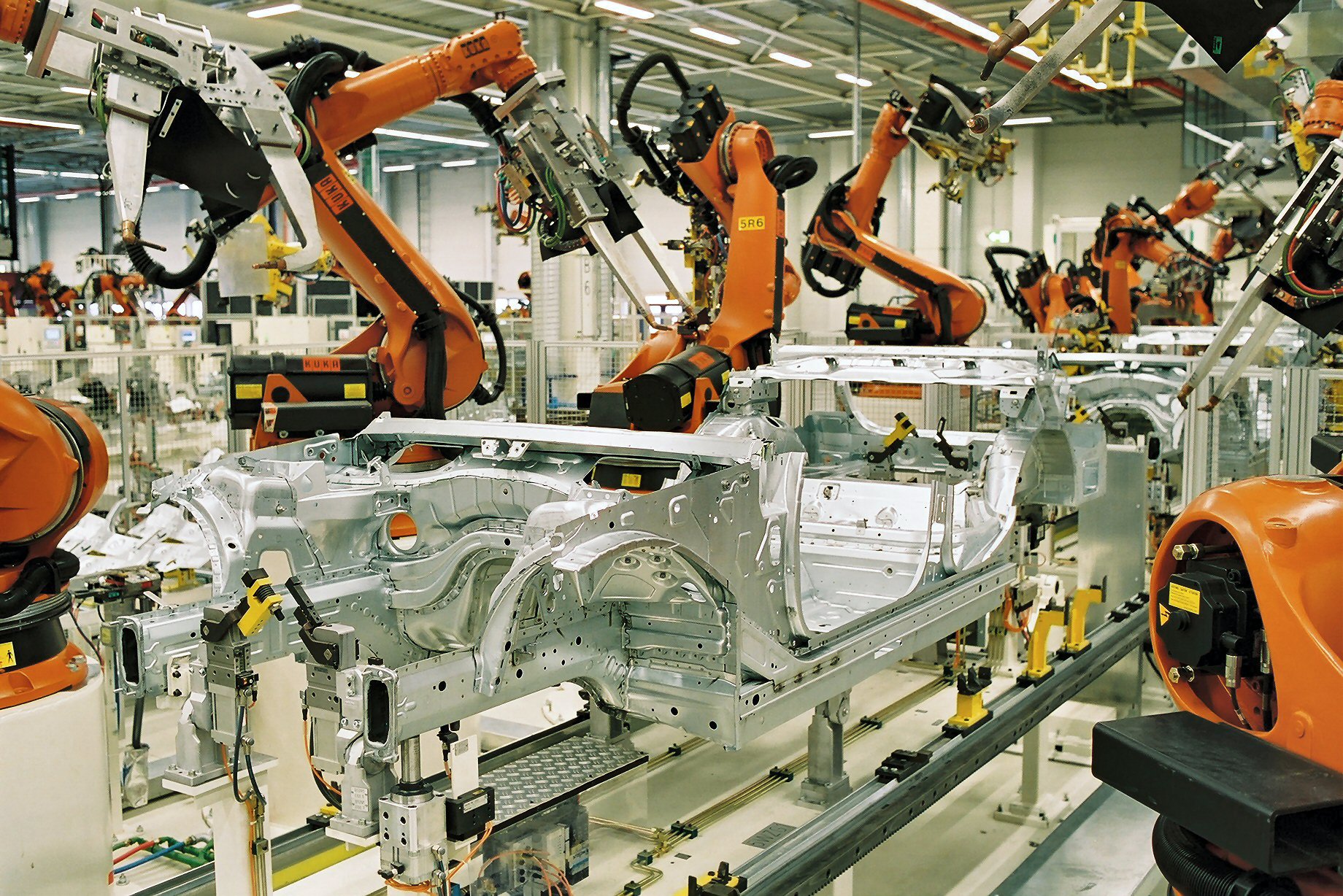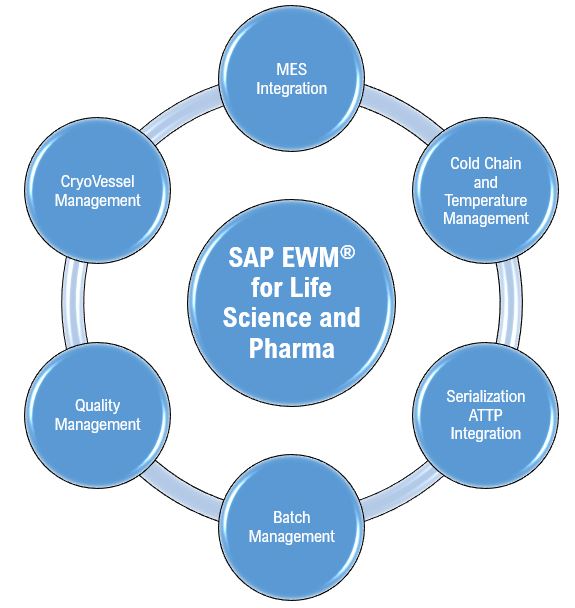Artificial intelligence (AI) is reshaping how business operates through automating business processes, enhancing decision-making, improving customer and employee experiences, and driving innovation. By embracing AI in a strategic manner, enterprise can unlock new levels of efficiency and revenue streams and become more competitive. Companies are adopting AI and transforming the way of working to be more streamlined and efficient. However, companies struggle to scale AI due to a lack of strategy, governance, skilled resources, and a clear understanding of implementation risks.
To scale AI applications from proofs of concept to successful enterprise-wide applications, companies need a carefully structured plan to execute AI initiatives effectively — unlocking significant value without wasting the company’s resources and reputation. We have defined a comprehensive framework for scaling AI across the enterprise, addressing key dimensions critical to become an AI-first enterprise (Figure 1).
Figure 1. Core building blocks to scale into an AI-first enterprise
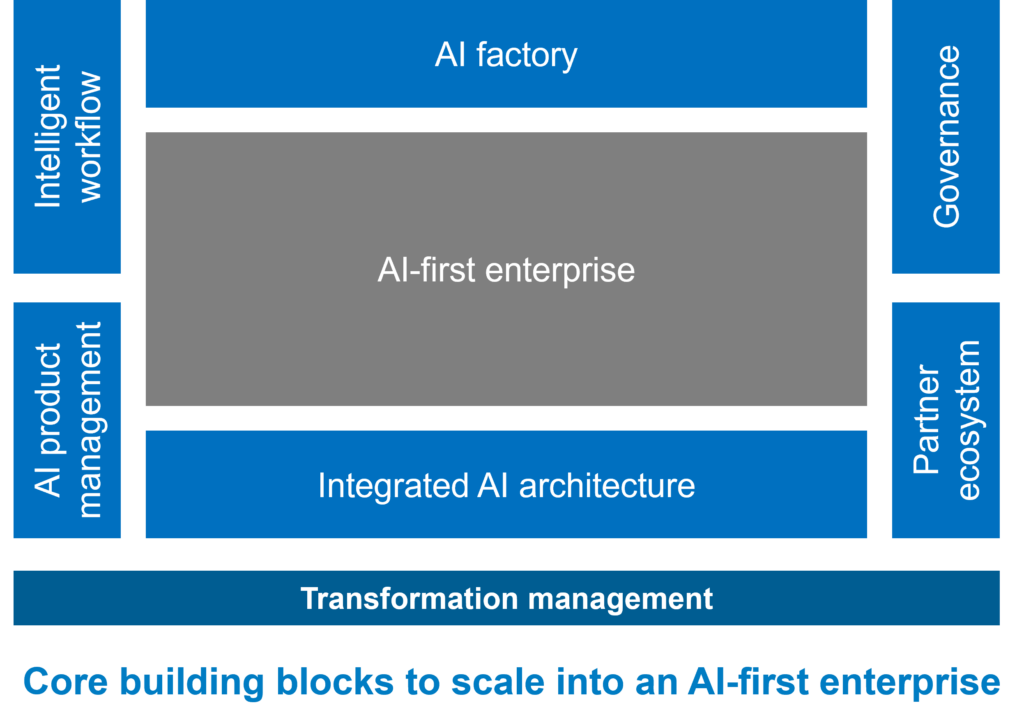
1. Integrated AI architecture
Scaling AI requires robust data infrastructure, but organizations often grapple with fragmented data silos, incompatible formats, and insufficient data quality. Poor data governance and exponential data growth further complicate model training and deployment. Without addressing these issues, AI models risk performance degradation, biased outputs, or failure to adapt to real-world conditions.
An integrated AI architecture provides the foundation for successful AI scaling. This architecture should incorporate:
- Data mesh: A decentralized approach to data management that enables domain-oriented ownership and facilitates rapid access to high-quality data across the organization.
- Data pipeline: A robust system for collecting, processing, and delivering data to AI models efficiently.
- AI platform: A centralized environment for developing, testing, and deploying AI models at scale.
2. Intelligent workflows
Reimagining existing business processes offers the most effective way to achieve tangible outcomes from AI implementation by allowing organizations to streamline workflows, automate repetitive tasks, and unlock new efficiencies. However, many customer-facing processes span departmental or business unit (BU) boundaries, where alignment is often lacking, leading to mis-prioritized AI use cases. Reimagine existing business processes through:
- Process analysis: Thoroughly examine current workflows to identify opportunities for AI enhancement.
- Use case identification: Collaborate across BUs and departments to pinpoint critical areas where AI can add significant value.
- Prioritization: In early stages of adoption establish a central cross-BU group to rank use cases based on business impact, considering metrics like cost savings, revenue generation, and customer satisfaction.
3. AI factory
Talent shortages in ML engineering and data science persist, while rising cloud/AI compute costs strain budgets. AI projects and associated outcomes stall due to skill gaps or infrastructure limitations, eroding stakeholder confidence. Establish an AI factory for rapid experimentation and deployment of AI solutions:
- AI labs: Create dedicated spaces for experimentation and innovation.
- Cross-functional teams: Form agile, multidisciplinary teams combining business, data science, and IT expertise.
- Strategic partnerships: Collaborate with system integrators to scale AI implementation rapidly.
4. Governance for responsible AI
Ensuring ethical AI at scale requires balancing innovation with compliance across jurisdictions (e.g., GDPR, CCPA). Detecting bias in complex models remains technically challenging. Noncompliance risks legal penalties, while unethical AI damages brand reputation. Organizations need to ensure ethical and compliant AI use through:
- Privacy and security: Implement robust data protection measures.
- Ethical AI framework: Develop guidelines for responsible AI development and deployment including policies for transparency, accountability, fairness, and privacy protection.
5. New product introduction
Monetizing AI-driven products demands high upfront investments, with uncertain return on investment (ROI) timelines. Poorly validated products fail to meet market needs, leading to sunk costs. Leverage AI to drive innovation in product offerings through:
Business model analysis: Evaluate existing models to identify gaps and opportunities.
Data asset utilization: Explore ways to monetize company data through AI-driven products. Use AI insights to anticipate and address emerging customer needs.
6. Partner ecosystem
Foster a collaborative environment to maximize AI value while balancing risks and the need for speed:
- API development: Create and expose APIs for partner integration while adopting zero-trust security protocols.
- Prebuilt LLM utilization: Leverage existing open-source large language models to accelerate development.
- Network effects: Design partnerships that create exponential value through data and insight sharing.
7. AI transformation management
Workforce resistance and inadequate upskilling programs hinder adoption. Employees tend to revert to legacy processes, negating AI efficiencies. To overcome this challenge, establish a central body to guide the AI transformation:
- AI vision: Define and communicate a clear vision for AI adoption across the organization.
- Operating model: Develop a framework for AI integration into business operations and manage the portfolio that streamlines, prioritizes all AI use cases.
- Change management: Implement strategies to facilitate organizational adaptation to AI-driven processes.
- Talent upskilling: Invest in training programs to enhance AI literacy and expertise across the workforce.
By implementing this comprehensive framework, organizations can effectively scale their AI initiatives, driving innovation, efficiency, and competitive advantage. The key to success lies in a holistic approach that addresses technology, processes, people, and governance in tandem.
Some companies are more advanced than others in adopting AI enterprise-wide. Large tech companies such as Microsoft, Google, Amazon and IBM are leading the AI revolution. If your organization has started the AI journey, it is important to understand where its AI adoption stands from a maturity standpoint and plan to fill in gaps to move to the next stage in the AI roadmap.
Figure 2. AI journey maturity model: Where are you?
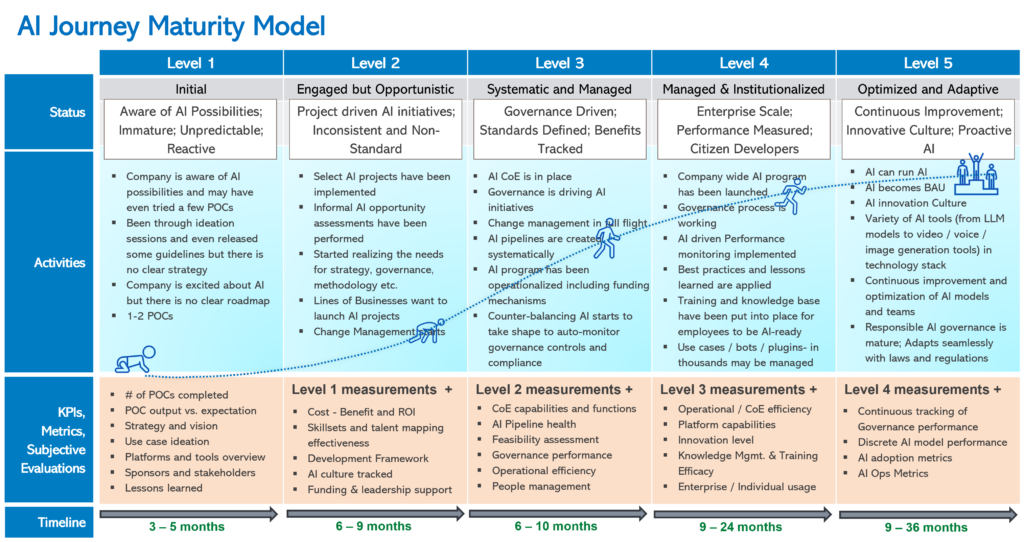
As a strategic AI partner for one of the tier 1 communications service provider, we helped to rapidly scale AI across the enterprise leveraging the dimensions of our scaling framework ( Figure 3).
Figure 3. Framework to scale AI across the Enterprise
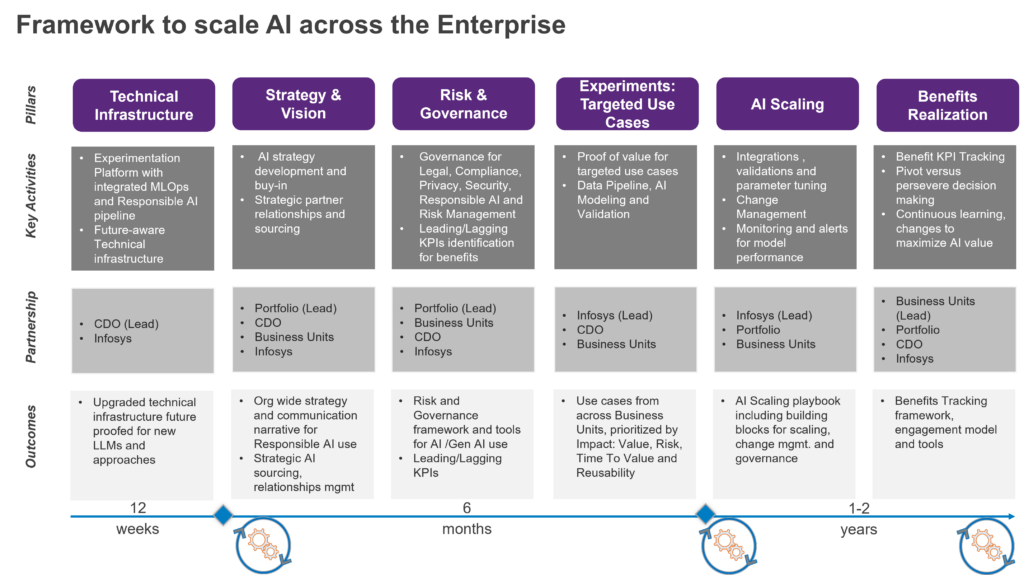
We built a comprehensive AI platform with components including vector store, LLM pipeline, in-house model serving capabilities, and filters for PII, copyright, and profanity. We defined an operating model with cross-business unit portfolio alignment, integrating legal and compliance considerations. Initial experiments focused on easily implementable use cases, such as an HR policy assistant and FAQ-based information retrieval systems. By scaling rapidly with a global AI factory model, the enterprise deployed over 100 AI use cases in two years, delivering significant ROI.
As year 2025 starts, the time for experimentation is over. It is time for bold action. The era of chatbots and copilots is quickly moving into agentic AI to automate business processes end-to-end. Fast adopters are already experimenting with the agentic AI concept to explore possibilities and start building an agentic AI platform. Leaders must rethink how workforce dynamics will unlock the full potential with AI and plan to integrate AI agents into their organization effectively. The future belongs only to those who take action and prepare.






